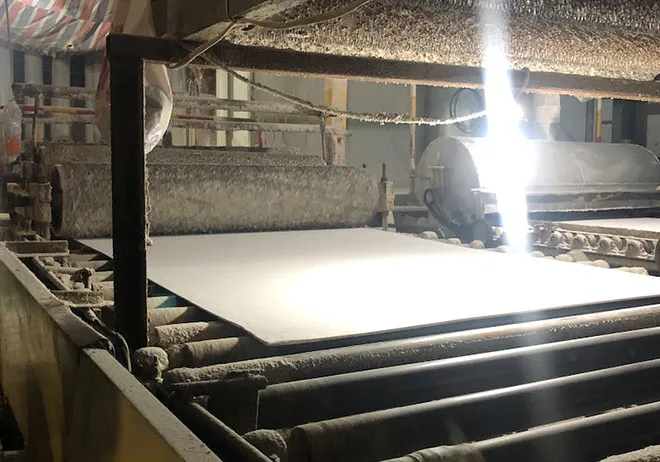Dec . 12, 2024 10:56 Back to list
suspended ceiling access panels
The Importance and Applications of Suspended Ceiling Access Panels
Suspended ceiling access panels have become an essential component in modern building design and construction. These panels not only enhance the aesthetic appeal of a space but also provide vital access for maintenance and inspections of the infrastructure hidden above the ceilings. This article explores the importance, types, and applications of suspended ceiling access panels.
What are Suspended Ceiling Access Panels?
Suspended ceiling access panels are removable sections integrated into suspended ceilings, designed to provide entry points to the plenum space above the ceiling. This space often houses critical elements such as HVAC systems, electrical wiring, plumbing, and insulation. The ability to access these areas easily is essential for routine maintenance, repairs, and inspections, making access panels a practical choice in both residential and commercial buildings.
Importance of Access Panels
1. Ease of Maintenance One of the primary advantages of suspended ceiling access panels is that they facilitate easy maintenance of HVAC systems, electrical conduits, and plumbing. Regular inspection and servicing of these systems are crucial for ensuring efficiency and longevity, and access panels make this process significantly easier and more efficient.
2. Aesthetic Integration Access panels are designed to blend seamlessly into the suspended ceiling grid, maintaining the aesthetic continuity of a space. Available in various finishes and designs, they can mimic the surrounding ceiling tiles, ensuring that functionality does not come at the cost of style.
3. Safety Compliance Buildings must comply with various safety and building codes, which often require accessible ceiling spaces. Suspended ceiling access panels allow for safe entry to these critical areas, which is especially important in high-rise buildings and commercial spaces where the risk of electrical fire, water damage, or ventilation issues can arise.
4. Flexibility These access panels come in various sizes and configurations, allowing them to be installed in a multitude of settings. This adaptability is crucial for buildings that may undergo renovations or modifications over time, offering a cost-effective solution for maintaining access to essential systems.
Types of Suspended Ceiling Access Panels
suspended ceiling access panels

1. Hinged Access Panels These panels swing open on hinges, providing easy access to the area above the ceiling. They are often used in locations that require frequent access, such as utility rooms or areas with significant HVAC equipment.
2. Drop-in Access Panels Designed to fit within the grid of the suspended ceiling tiles, drop-in panels can be easily removed without the need for tools. They are ideal for locations where aesthetics are a priority, as they blend in seamlessly with the surrounding tiles.
3. Fire Rated Access Panels In commercial and industrial settings, fire-rated access panels are necessary to maintain safety standards. These panels are constructed with materials that resist fire spread, ensuring that they do not compromise the building's fire protection measures.
4. Insulated Access Panels For environments where temperature regulation is crucial, insulated access panels are utilized. These panels help maintain energy efficiency by providing thermal insulation in areas where heat loss or gain could be a concern.
Applications of Suspended Ceiling Access Panels
Suspended ceiling access panels find their applications in various environments
- Commercial Buildings Offices, retail spaces, and restaurants use access panels for routine maintenance of HVAC and electrical systems. - Healthcare Facilities Hospitals and clinics require easy access for the maintenance of critical systems while adhering to strict regulatory standards. - Educational Institutions Schools and universities benefit from access panels to facilitate the maintenance of their extensive facilities. - Residential Homes Homeowners can utilize access panels in basements, attics, or utility rooms for easy access to plumbing and electrical systems.
Conclusion
Suspended ceiling access panels are a crucial component of modern architecture, providing practical solutions for maintenance while maintaining aesthetic appeal. With various types available to suit different needs, they play an integral role in the functionality and safety of a building. As construction techniques continue to evolve, the importance of easy access to hidden infrastructure will only grow, making these panels an indispensable element in building design.
-
Quality Ceiling Trap Doors & Access Panels | Easy & Secure AccessNewsAug.30,2025
-
Durable Ceiling T Grid Systems | Easy InstallationNewsAug.29,2025
-
PVC Gypsum Ceiling: Durable, Laminated Tiles for Modern SpacesNewsAug.28,2025
-
Pvc Gypsum Ceiling Is DurableNewsAug.21,2025
-
Mineral Fiber Board Is DurableNewsAug.21,2025
-
Ceiling Tile Clip Reusable DesignNewsAug.21,2025







